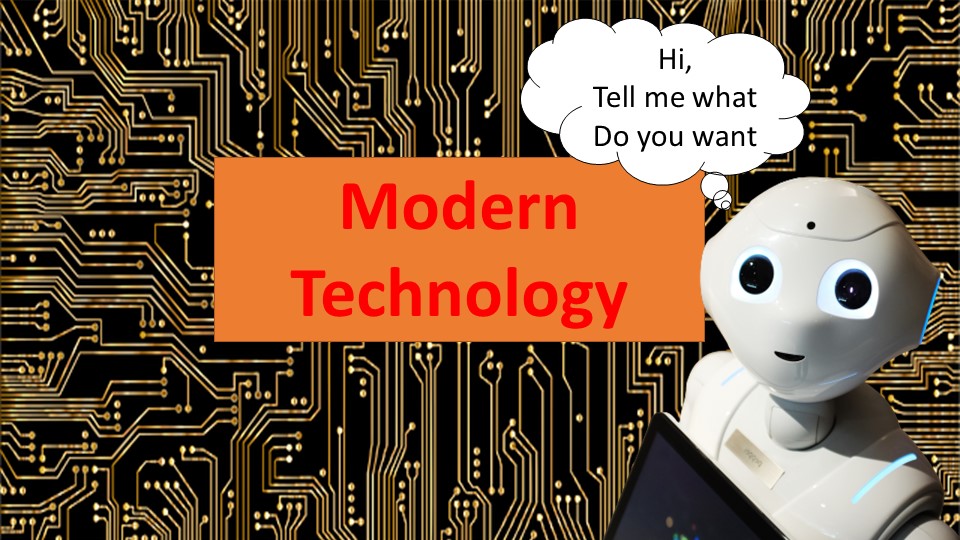Introduction
Technology is booming. 5G Technology, Artificial Intelligence and Machine Learning, the Internet of Things, Virtual and Augmented reality, and Cybersecurity are among the most popular technology trends for 2023.
These trends will likely drive technological progress and bring about new opportunities for businesses and consumers in the coming year.
Top 5 Technology Trends for 2023
1. 5G Technology

The widespread adoption of 5G networks is expected to improve data transfer speed and network coverage significantly. This will enable new applications and services such as connected cars, telemedicine, and smart cities.
5G technology represents the next generation of cellular network technology, offering faster data transfer speeds and improved network coverage compared to its predecessor, 4G. This makes it possible for new and more advanced applications and services to be developed.
One of the areas where 5G technology is expected to have a significant impact is connected cars. With faster data transfer speeds, vehicles will be able to communicate with each other and with the infrastructure around them in real time, leading to safer and more efficient driving.
This could also lead to the development of autonomous vehicles, which would rely on 5G networks to communicate with their surroundings.
Telemedicine is another area where 5G technology is expected to make a big impact. With faster data transfer speeds, medical professionals can access and share high-resolution images and video, enabling remote consultations and diagnoses.
This could improve access to healthcare, particularly in rural or remote areas, and reduce the need for patients to travel long distances for appointments.
Finally, 5G technology will also be a driving force behind the development of smart cities.
With improved network coverage and faster data transfer speeds, cities will be able to collect and analyze data from a range of sources, including connected devices, sensors, and cameras.
This data can then be used to optimize traffic flow, reduce energy consumption, and improve public safety.
In conclusion, the widespread adoption of 5G technology is expected to bring about many new and exciting applications and services, revolutionizing industries such as transportation, healthcare, and urban development.
2. Artificial Intelligence and Machine Learning

Artificial Intelligence (AI) and Machine Learning (ML) are two of the most rapidly growing fields in technology, and their impact on various industries is expected to continue to grow in the coming years.
AI and ML involve the development of computer systems that can perform tasks that would typically require human intelligence, such as recognizing patterns, making predictions, and making decisions.
One of the areas where AI and ML are expected to have a significant impact is personalized medicine.
AI can analyze large amounts of patient data, including genetic information, medical history, and lifestyle factors, to develop personalized treatment plans for each patient. This could lead to improved patient outcomes and reduced healthcare costs.
Another area where AI and ML are expected to play a big role is autonomous vehicles. AI can be used to develop self-driving cars that can safely navigate roads without human intervention.
ML algorithms can be trained to recognize objects in the environment, such as other vehicles and pedestrians, and to make real-time decisions about how to respond to these objects.
Customer service is another area where AI and ML are expected to have a big impact. AI-powered chatbots can be used to provide 24/7 support to customers, answer questions, resolve issues, and improve overall customer satisfaction.
ML algorithms can also be used to analyze customer behavior, helping companies understand their customers better and make more informed decisions about improving their products and services.
In conclusion, the use of AI and ML in various industries is expected to continue to grow, leading to new innovations and improving existing systems and processes.
This will bring benefits such as improved patient outcomes, safer roads, and better customer service.
3. Internet of Things

The Internet of Things (IoT) refers to the network of physical devices, vehicles, home appliances, and other items embedded with electronics, software, sensors, and connectivity, enabling these objects to connect and exchange data.
The number of connected devices is expected to continue to grow rapidly in the coming years, leading to the creation of smart homes, factories, and cities.
For example, smart homes are equipped with a range of connected devices, including smart speakers, smart lights, and smart thermostats, which can be controlled using a smartphone or voice-activated virtual assistant.
This allows homeowners to automate and control many aspects of their homes, such as lighting, heating, and security, from a single device.
In factories, connected devices can be used to monitor and control production processes in real time, leading to improved efficiency and reduced downtime.
IoT-connected sensors and devices can also be used to monitor the health and performance of machinery, allowing maintenance to be performed proactively before a breakdown occurs.
Smart cities are cities equipped with a range of connected devices and sensors that can be used to improve the delivery of public services, such as transportation, energy, and waste management.
For example, IoT-connected sensors and cameras can be used to monitor traffic flow, enabling city planners to optimize traffic management and reduce congestion.
However, as the number of connected devices continues to grow, the need for new cybersecurity measures to protect these devices from cyber threats will also increase. Hackers may attempt to gain access to connected devices to steal sensitive data or to control them for malicious purposes.
New cybersecurity measures, such as encryption, secure authentication, and threat detection, will need to be developed and deployed to address these risks.
In conclusion, the continued growth of the IoT is expected to lead to the creation of smart homes, factories, and cities, bringing about many benefits, such as improved efficiency and convenience.
However, it will also drive the need for new cybersecurity measures to protect these connected devices from cyber threats.
4. Virtual and Augmented Reality

VR and AR technology are expected to become more mainstream, finding new applications in fields such as education, entertainment, and tourism.
VR and AR allow users to experience digital content more immersively by fully replacing their physical surroundings with a virtual environment (VR) or by overlaying digital information onto the physical world (AR).
In the field of education, VR and AR have the potential to revolutionize the way students learn. For example, VR can be used to create interactive and immersive learning experiences that allow students to explore virtual environments, such as historical landmarks or scientific concepts, in a way that is not possible with traditional methods.
AR can be used to enhance existing educational materials, such as textbooks, by adding interactive elements, animations, and other digital content.
In the field of entertainment, VR and AR are expected to continue to grow in popularity, offering new ways for people to experience and interact with digital content. For example, VR can be used to create immersive gaming experiences, while AR can be used to enhance live events, such as concerts, by adding digital elements to the physical environment.
In the field of tourism, VR and AR have the potential to revolutionize the way people experience and explore new destinations.
For example, VR can create virtual tours of popular tourist attractions, allowing people to experience these destinations from the comfort of their homes.
AR can be used to enhance real-world tours, providing additional information and context about the destinations being visited.
In conclusion, VR and AR technology are expected to become more mainstream in the coming years, finding new applications in fields such as education, entertainment, and tourism.
These technologies have the potential to bring about many benefits, such as improved learning experiences, more immersive entertainment experiences, and more interactive and informative tourism experiences.
5. Cybersecurity

Cybersecurity refers to the measures taken to protect digital devices, networks, and data from unauthorized access, use, disclosure, disruption, modification, or destruction.
With the increasing amount of data and connected devices, the need for robust cybersecurity measures will only continue to grow.
The rise of the Internet of Things (IoT) has led to a proliferation of connected devices, many of which are vulnerable to cyber threats.
Hackers may attempt to gain access to these devices to steal sensitive data or to control them for malicious purposes. As a result, the need for new and improved cybersecurity measures has never been greater.
One area in which innovation is expected in the field of cybersecurity is biometric authentication.
Biometric authentication involves using unique physical characteristics, such as fingerprints or facial recognition, to verify a user’s identity.
This can provide a more secure form of authentication than traditional methods, such as passwords, which can be easily forgotten or stolen.
Encryption is another area in which innovation is expected in the field of cybersecurity. Encryption is the process of converting plaintext into ciphertext, making it unreadable to unauthorized users.
With the increasing amount of sensitive data being transmitted and stored electronically, the need for strong encryption methods to protect this data has never been greater.
Threat detection is another area in which innovation is expected in the field of cybersecurity.
Threat detection involves using software and other tools to identify and respond to potential cyber threats quickly and effectively.
With the increasing number and sophistication of cyber threats, the need for improved threat detection methods has never been greater.
In conclusion, the need for robust cybersecurity measures will only continue to grow as the amount of data and connected devices increases.
This will drive innovation in areas such as biometric authentication, encryption, and threat detection, leading to more secure and protected digital environments.




